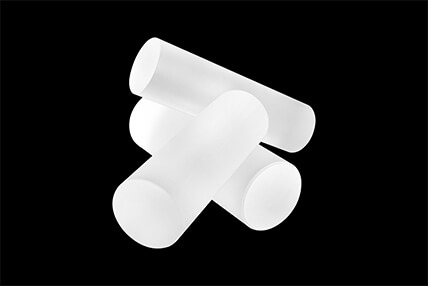
Magnesium fluoride(MgF2) excimer laser material
Magnesium fluoride is widely used in excimer lasers of argon fluoride, krypton fluoride and xenon chloride because of its high transmission rate, long service life and low light energy loss. Theoretically and experimentally, it is proved that the more ultraviolet wavelength lasers have higher material requirements, which means that the magnesium fluoride materials used in these three wavelength lasers can be different. As the world’s leading supplier of magnesium fluoride crystals, we have a good understanding of the material requirements for excimer lasers at different wavelengths.
Applications :
193NM for D38.1, 248NM for D50*6, 308NM for 65*45*4
Product Advantage :
Magnesium fluoride material can be supplied in the most typical 3 excimer bands 193/248/308NM
Size can be 0.5 inch to 3 inches, maximum capacity 150 mm
Supply capacity: D38.1*5 of 193NM, 3K pieces per month
Processing capacity: 10-5; 1/10L, wedge angle tolerance +, -15 sec, Ra<2nm Orientation capacity: 100, 001, 110
Product Parameters :
Can I use my 308NM laser lens in 193NM?
The price of the 193NM material must be much more expensive than the 308NM material; that is to say, the 193NM material can be used in 308NM. However, the 308NM material may not work well in 193NM. All excimer crystal materials are custom-made products, so if you choose versatility, then please choose the best material for this collection, otherwise please buy the most suitable material for the application
My magnesium fluoride lens has become discolored after a period of use?
It is possible that this is due to an inherent defect in the material, such as a defect in the crystal growth process, but it is also related to the shortened life of the material under prolonged UV irradiation with high energy lasers. We have developed a new UV irradiation system that can detect congenital defects in crystals, and enable users to significantly extend the life of their crystals.
Is my fluoride crystal material fluorescent?
Fluorescence and means absorption and refraction, and the application of low transmittance or excessive loss of capacity; but there are many objective factors in the generation of fluorescence, for example, no fluorescence at 308NM does not mean no fluorescence at 193NM; no fluorescence at 2J energy does not mean no fluorescence at 5J energy. Therefore, the materials of excimer are all custom-made materials, and the fluorescence and crystal base materials, growth process, growth environment, processing process and environment, and test system construction all have a great relationship, and the cost is extremely high.
products and services.






